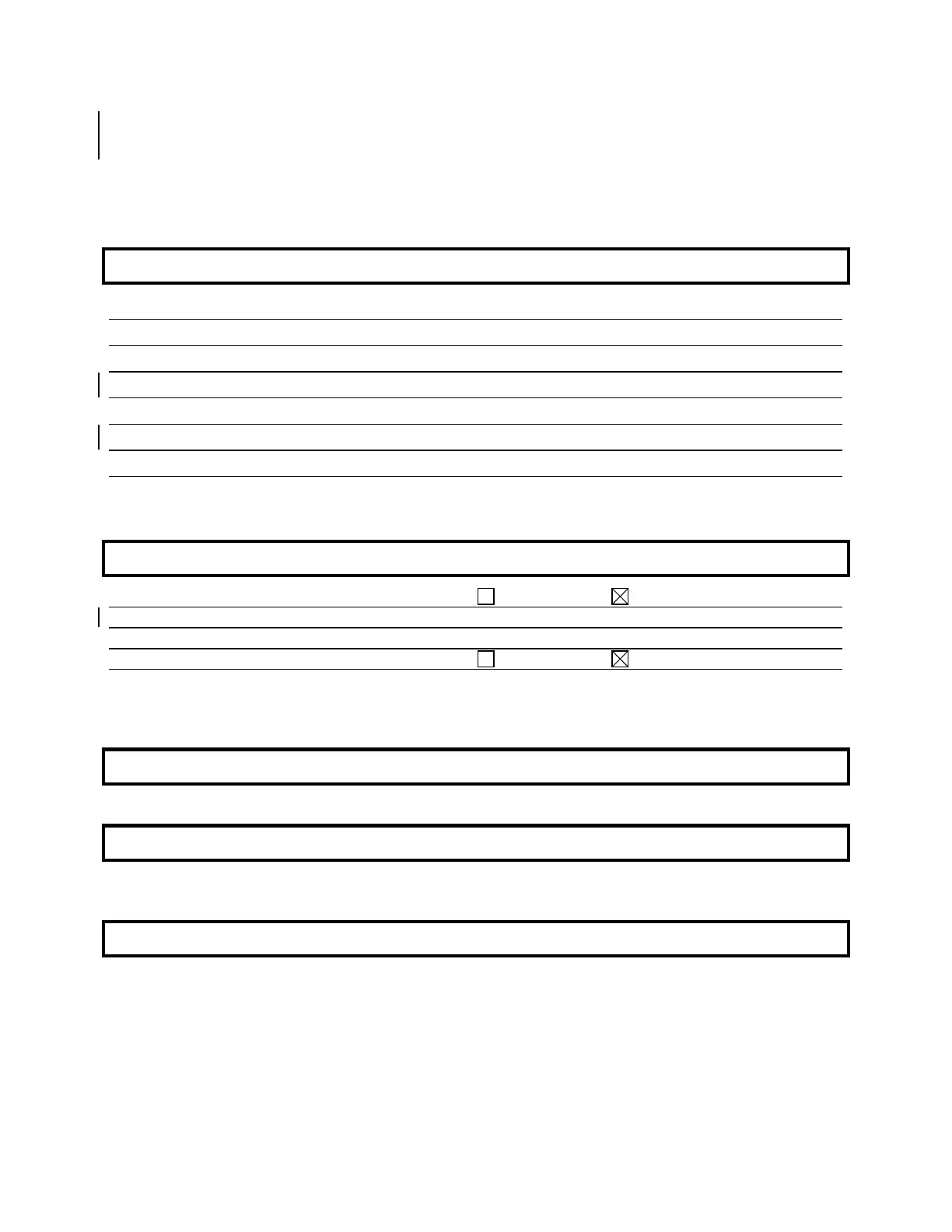Product: Nitrogen P-4631-F Date: October 2001
Page 4 of 8
EYE PROTECTION: Wear safety glasses when handling cylinders. Select in accordance with OSHA
29 CFR 1910.133.
OTHER PROTECTIVE EQUIPMENT: Metatarsal shoes for cylinder handling. Select in accordance
with OSHA 29 CFR 1910.132 and 1910.133. Regardless of protective equipment, never touch live
electrical parts.
9. Physical and Chemical Properties
MOLECULAR WEIGHT: 28.01
SPECIFIC GRAVITY (air = 1) at 70°F (21.1°C) and 1 atm: 0.967
GAS DENSITY at 70°F (21.1°C) and 1 atm: 0.072 lb/ft
3
(1.153 kg/m
3
)
SOLUBILITY IN WATER, vol/vol at 32°F (0°C) and 1 atm: 0.023
PERCENT VOLATILES BY VOLUME: 100
BOILING POINT at 1 atm: -320.44°F (-195.80°C)
MELTING POINT at 1 atm: -345.8°F (-209.9°C)
APPEARANCE, ODOR, AND STATE: Colorless, odorless, tasteless gas at normal temperature
and pressure.
10. Stability and Reactivity
STABILITY: Unstable Stable
INCOMPATIBILITY (materials to avoid): None known.
HAZARDOUS DECOMPOSITION PRODUCTS: None known.
HAZARDOUS POLYMERIZATION: May Occur Will Not Occur
CONDITIONS TO AVOID: Under certain conditions, nitrogen can react violently with lithium,
neodymium, titanium, and magnesium to form nitrides. At high temperature it can also combine with
oxygen and hydrogen.
11. Toxicological Information
Nitrogen is a simple asphyxiant.
12. Ecological Information
No adverse ecological effects expected. Nitrogen does not contain any Class I or Class II ozone-depleting
chemicals. Nitrogen is not listed as a marine pollutant by DOT.
13. Disposal Considerations
WASTE DISPOSAL METHOD: Do not attempt to dispose of residual or unused quantities. Return
cylinder to supplier. For emergency disposal, secure cylinder in a well-ventilated area or outdoors, and
then slowly discharge gas to the atmosphere.
